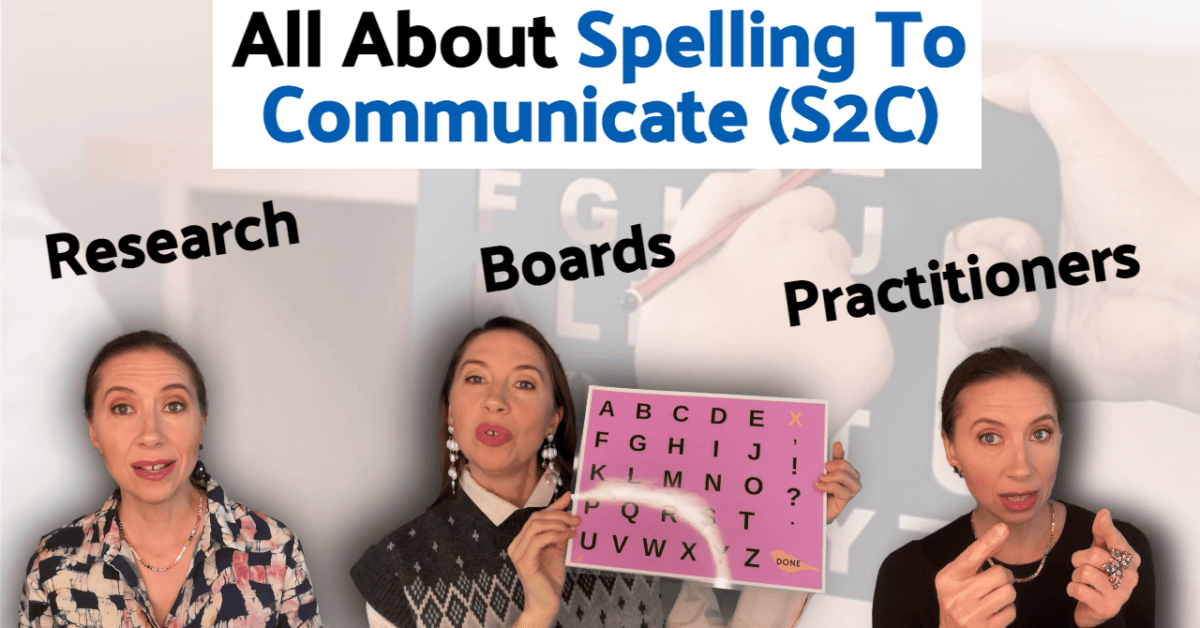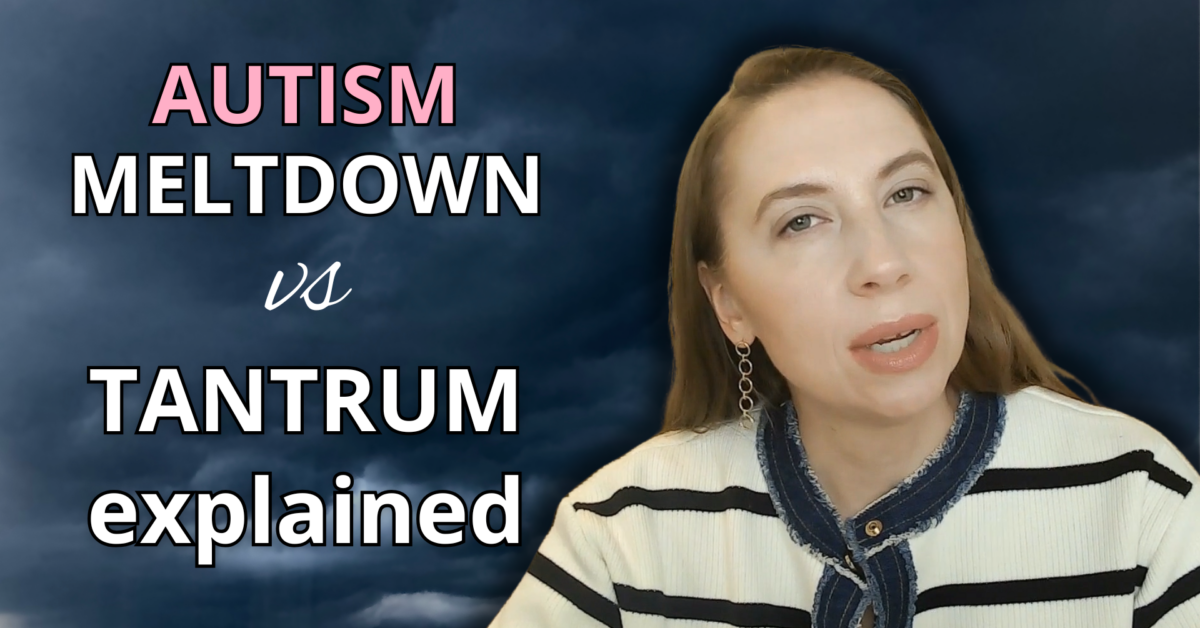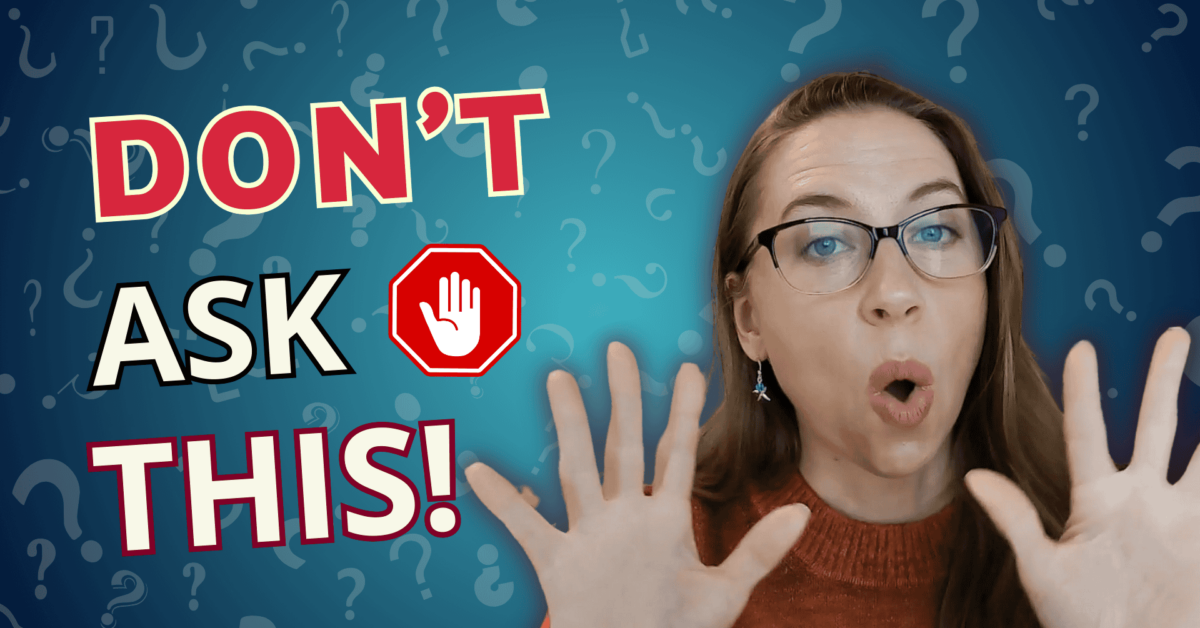Topics we’ll cover:
- New research
- Spelling to Communicate Boards
- Spelling to Communicate Practitioner
- Is Spelling to Communicate evidence-based?
- At what age can you start Spelling to communicate?
- Is S2C legit?
- Some more questions about S2C
Spelling to Communicate – New Research
What does this card in the video below symbolize?
Freedom!!
Looks like a simple piece of paper right? It is so much more. This is what is used by people who communicate through something called spelling to communicate but many times it’s abbreviated as S2C.
A person points and touches so that they could spell out words, sentences, paragraphs, and even books!
Just so you are aware that this simple little piece of paper is very controversial.
What’s the Controversy with Spelling to Communicate
Let’s understand this controversy a little bit. The people who use this way to communicate the most are people with autism who are non-speaking. Sometimes they’re labeled severely autistic or profoundly autistic. Most of these people are thought to have very low intelligence because they can’t speak, they can’t answer academic questions, and their body movement is very erratic and unfortunately, many people make the assumption that there is no intelligence. Which then their life then consists of accessing education at basically the kindergarten level for two decades! (school lessons like- What day is today? Is it cloudy “A-B-C”? You get the idea, right?) So they do this for two decades, and their future, it’s quite bleak.
So you now have a picture in your mind of the type of person who would use this board to communicate. So why is this piece of paper so controversial? Because many people believe that there is no way a person who is profoundly autistic with severe behaviors could actually be intelligent. They say that the person holding this piece of paper is actually moving it to the finger and it’s not really the autistic person who is communicating, but rather the person holding it who’s manipulating it. That’s not right that someone’s intelligence can be entirely written off that easily. It’s not fair to anyone, and you know I am about quality science, so what’s the science of spelling to communicate? There has been one research study done in 2020, this is cutting-edge science for you to know this study actually leverages technology to answer the question is the autistic person actually spelling on their own.
Study on Spelling to Communicate (S2C)
- There were nine nonspeaking autistic individuals and they had been using the letter boards for at least two and a quarter years, so these were experienced spellers,
- They communicate without receiving physical support, meaning the person who is holding the letter board does not touch their hand, arm, or anything. No one is touching them at all while they are spelling. There is a person holding the letter board.
- Participants wore a head-mounted eye tracker as they responded to 24 questions about an article read aloud to them by a familiar assistant.
The study structure
- Participants composed their responses by pointing independently with the index finger of their right hand to letters on the letter board held vertically by the assistant. Again, the assistant did not touch them.
- The same individual served as the assistant for all participants
- Responses ranged in length from a single word (so let’s say the question was, “Name a type of flower?” the answer was “Sunflower”), or long answers (let’s say the question was, “Can you think of something you have to wait for?” The answer was, “That is hard, I feel like the world is waiting on me, not the other way around”).
So you can see the spelling and the length of communication varied depending upon the question and also what the person felt like answering.
The discussion
- Here’s a direct quote, “The accuracy, speed, timing, and visual fixation patterns reported here suggest that participants were not simply looking at and pointing to letters that the assistant holding the letter board cued them to”.
- “Instead, our data suggest that participants actively generated their own text fixating and pointing to letters that they selected themselves.”
A little further in the discussion,
- This is not to deny that the assistant occasionally influenced participants.
- On the contrary, the assistant sometimes redirected participants who seemed to lose their train of thought, requested clarification, interrupted, and said aloud a word before the participant finished spelling it.
- Importantly, however, this kind of influence is also common among speaking people as when someone helps another one find a word or completes their sentence.
More Clarity
- This sample population was unique because it comprised nonspeaking autistic people who were intentionally chosen because they were experienced letter board users
- And here’s another direct quote. “We are not claiming that all nonspeaking autistic people can learn to convey their thoughts using a letter board.”
- The scientists in the paper conclude that participants in their study were spelling their own thoughts based on their speed and visual fixation patterns.
The paper is very technical. There are lots of graphs and figures. If you want to read the research, click here to read the scientific article. The scientists conclude that the participants were spelling on their own based upon all the analysis of the data provided by the eye tracking technology.
- The scientists do not claim that someone who spells slowly or whose eyes cannot be tracked is incapable of conveying their own thoughts.
The Conclusion
“The blanket dismissal of assisted autistic communication is therefore unwarranted.”
Reference
Sci Rep. 2020 May 12;10(1):7882
Spelling to Communicate Boards
Spelling to communicate. What is it? How does it work? These are some questions that you might be asking yourself if you’ve heard about it. And if you or your child have difficulty speaking, then this article is for you.
Spelling to communicate is sometimes abbreviated as S2C. It’s a cutting-edge technique that has one clinical study completed already.
Speech and motor planning
Let’s think about speech. There’s a lot of motor planning involved. We have to coordinate our jaw, tongue, lips, and breath. Many fine motor skills are going on, and many people with autism have motor planning difficulties. So much so, that there’s a discussion about adding motor planning difficulties to the requirements of an autism diagnosis.
For some, motor planning is challenging; for others, speech is also very difficult. So S2C was developed specifically for those with autism who have motor planning difficulties.
S2C uses gross motor skills, which are generally better, although still difficult, to access communication. You might be thinking, “Okay, but what about using the different devices and just hitting buttons and things like that?” That all involves fine motor skills. S2C involves gross motor skills.
Communication boards
Stencil board
People generally start with stencil-like letter boards, and they have to use gross motor skills to poke a pencil through the letter to spell the word.
Each letter board has only a third of the alphabet, so the target alphabets are quite large. Someone holds the letter board and the speller pokes a pencil through the letter so that there’s no doubt what letter they are choosing.
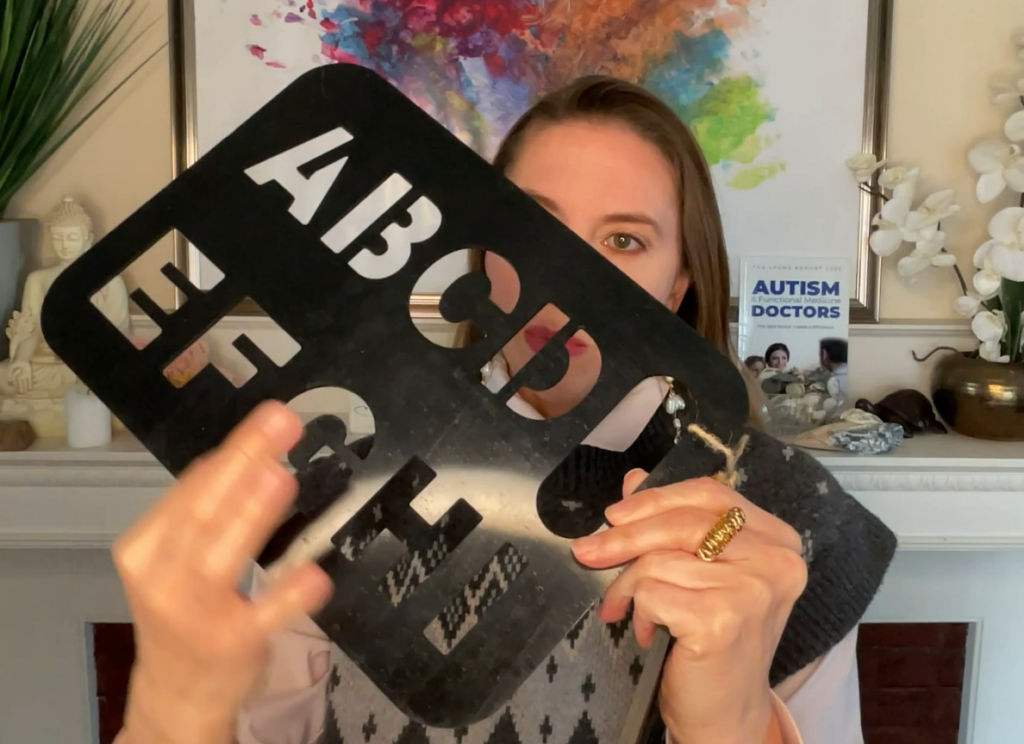
The pencil helps with targeting and gives sensory feedback. Generally, students start with a pencil when using this letter board, and then they progress to using their fingers to poke through the letter board to spell whatever word they want.
Math board
Math can also be introduced. The maths board has numbers and the maths functions addition, subtraction, multiplication, division, and equals. And it works the same way – the student pokes their finger through the number or function.
Single board
As mastery improves, a single letter board is then used. And this makes a big difference because all the letters are on one board. There’s a lot of speed increase when students use one letter board with all the letters. And many students get really excited when they get up to this level!
The students are still poking their fingers. It’s much smaller, but they’re poking their finger to get that sensory feedback. They become so proficient in letter identification that they can spell words, sentences, paragraphs, and even books!
Communication partner
There is a communication partner that is always holding these letter boards. There’s a little handle on the board for the partner to hold, and the learner pokes through the letter.
With S2C, the communication partner, the person that is holding these letter boards, never touches the speller. They might give redirections verbally, but there’s no assistance with the arm. There’s no hand-over-hand, hand-under-hand, or anything along those lines. Again, there might be a verbal redirection or some type of verbal prompt.
Laminated Spelling Boards
The next level of mastery then typically is to move to the laminated letter board. It’s lighter and easy to carry. On the backside of this letter board, you have math functions as well.
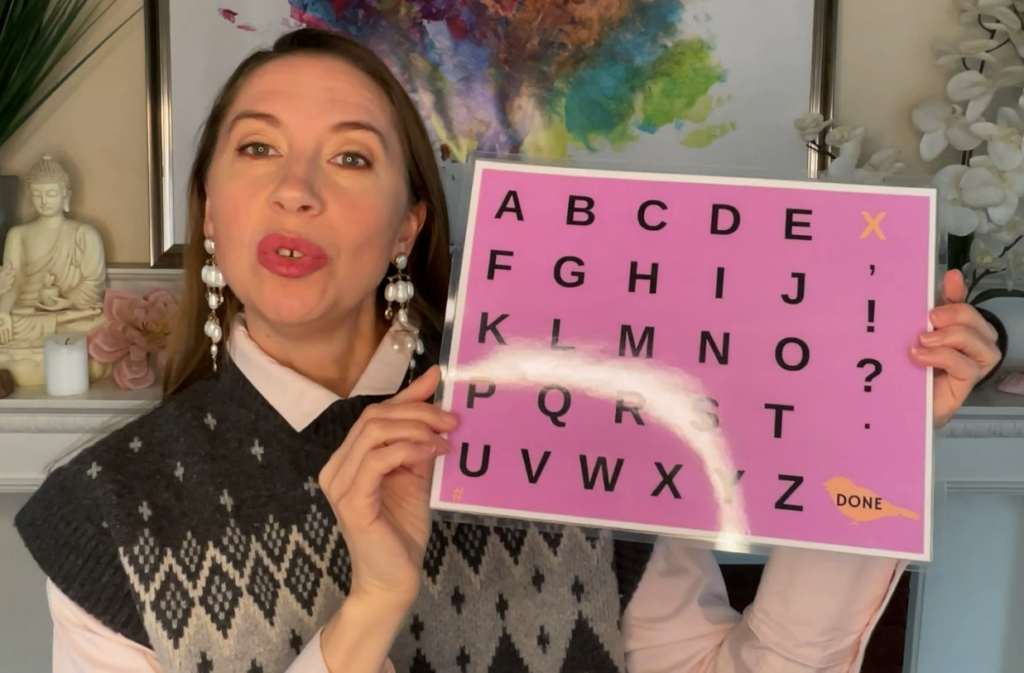
Speakers just touch the letters. I have seen some people spell on this letter board so fast that I can’t keep track of what they’re spelling because they’re so quick. Those are very proficient spellers. Sometimes they’re called fluent spellers or open spellers.
Some students then go on to spelling on a keyboard, but not everyone. It’s a personal choice.
Controversy
S2C seems like a great option for people with autism to have, yes? Well, 10 to 20 years ago, there was a lot of controversy about using a technique similar to this. And the criticism was that the communication partner, the person holding the board, was actually moving the board and that the person spelling was not really spelling.
This research study that was done on this technique clearly answers the question, “Is the person spelling the one who is selecting the letter?”
Links
- This is the organization that trains communication partners, plus some other cool links to check out if you’re interested in learning more.
- My video about the research study that was done on this technique clearly answers the question, is the person spelling the one who is selecting the letter? So feel free to check out that video.
- https://nypost.com/2022/12/24/severely-autistic-kids-use-miracle-tool-to-communicate-for-first-time/
- https://www.5newsonline.com/article/news/health/spelling-2-communicate-program-coming-fort-smith/527-26cfde13-833a-4fcf-9452-4a62a605760c
- https://invictusacademyfl.org/academics/s2c/
- https://spellersthemovie.com/
What is a Spelling to Communicate Practitioner?
Historically, people with non-speaking autism were considered to have low intelligence. Because they didn’t have a way to communicate their intelligence, they were thought of as lacking intelligence. Which is not true.
Using S2C, non-speaking people with autism can communicate with other people. In their initial S2C learning stages, the spellers are assisted by communication and regulation partners. Some people call that partner an S2C practitioner, but that’s not technically accurate.
So what is an S2C practitioner, and how did it come about? Let’s learn more about them.
Origins
Elizabeth Vosseller is the person who is credited with originating and growing the S2C technique. She is, by training, a speech and language pathologist. She’s had decades of experience working with non-speaking individuals and is very dedicated to the non-speaking population of autism.
What is S2C?
S2C is a method of teaching purposeful motor skills for communication to individuals with autism and other sensory-motor challenges as a means of augmentative and alternative communication (AAC). As motor skills improve through consistent practice, students progress from pointing to letters on the letter boards to typing on the keyboard.
Technically at this moment, S2C is not a therapy.
What do S2C practitioners do?
- S2C practitioners work with non-speaking children and adults to teach them the motor skills necessary to point to letters to spell words, sentences, paragraphs, books, and so forth.
- S2C practitioners also coach and guide parents, teachers, siblings, au pairs, or anyone who will regularly be with the speller to provide the speller with continued support.
If your child is learning S2C, you may want to learn to be a great communication and regulation partner (CRP) so that they can spell with you and share their innermost thoughts. The S2C practitioner is the professional who will teach you this approach. A communication and regulation partner is anyone who can spell with the speller.
Certifying organization
The International Association for Spelling as Communication (I-ASC) is the organization that trains S2C practitioners. The I-ASC leadership council is led by 10 non-speaking people with autism who are fluent on the letter board. The organization’s leadership also includes an executive team and practitioner leaders.
Qualifications and course
The S2C practitioner can have any background. They do not need to be a speech therapist or an occupational therapist or anything along those lines. They do not need any therapeutic background.
Applicants are trained and certified by I-ASC in a six and half month training course to become an S2C practitioner, which includes a short internship. New practitioners are assigned a mentor so that they can continue to grow and learn. There are currently less than 100 trained S2C practitioners.
Links
- Spelling to Communicate: New Research Study
- Spelling to Communicate – Boards
- If you want to find an S2C practitioner
Is Spelling to Communicate Evidence-based?
Spelling to Communicate can become a bit of a controversial topic quite quickly. In this video, I talked about the one study that answered the question, “Is the speller actually the one spelling?” The research used technology to determine if the speller looks at the letter before they select it. This was an important question to answer with a research study because historically, people with non-speaking autism were considered to have low intelligence because they didn’t have a way to communicate their intelligence.
What makes a therapy evidence-based?
When a therapy has been a part of numerous, large, well-designed studies demonstrating that the therapy leads to a positive outcome for treating a specific problem, it is called evidence-based therapy.
Autism population and evidence-based therapies
Smaller sample size
Autism is heterogeneous, meaning it presents itself in many different ways. What is true for one person with autism isn’t true for another. This means no one therapy is relevant to the entire population of autism. In that vein, not every person with autism would need or want to use the Spelling to Communicate approach. This heterogeneity decreases the population size that can be studied.
Learned sample size
Then comes the interesting issue of how therapies are tested. You need a large enough number of people who know the therapy so that large, well-designed research studies can determine the therapy’s positive outcomes.
So you actually need:
- People with autism to learn S2C.
- And then we need these people to participate in the research studies.
The need for early adapters
This is where early adapters of S2C come in. Right now, people who are learning Spelling to Communicate would be considered early adapters. And scientists need these early adapters in order to do research studies with them.
The chicken or the egg problem
That one research study that was done certainly has given validity to the S2C approach. But in order to be officially classified as an evidence-based therapy, S2C needs numerous research studies. But again, here’s the catch – in order to study it, scientists need people who know the technique.
So people need to learn S2C even though it is not an evidence-based therapy yet. I would classify S2C as an emerging evidence-based approach for non-speakers with autism.
If you are a parent, ask your child to see if this is something that they would like to try to learn. It takes time and effort to master a communication technique. If nothing has been successful in the past, there is not much of a downside to trying this technique.
At what age can you start Spelling to Communicate?
At what age can you start S2C? Is S2C only for those with autism? Is S2C only for those who are nonverbal or non-speaking? Those are great questions, so let’s get right into them.
At what age can you start S2C?
Typically, students of S2C are five years or older. Why is that? It’s good to give your child ample time to grow from traditional speech therapy – OT, PT… Early intervention does make a difference, so it’s important to use those services.
Sometimes at age four, if there hasn’t been much change, certain exercises can be done in preparation for S2C. But traditionally, S2C can only be started at five years old.
Is S2C only for those with autism?
Short answer, no. The majority of children and people learning S2C are non-speaking people with autism. Some people with autism can speak, but they have difficulty saying what they want or truly mean. They too can use S2C to communicate.
However, anyone who has motor difficulties can explore S2C and see if it would benefit them.
Is S2C only for those who are nonverbal?
S2C is for those who are non-speaking, minimally speaking, or unreliably speaking. This is true for most AAC approaches.
The term nonverbal is being replaced with the term non-speaking. Self-advocates have said that non-speaking more accurately describes their experience. Nonverbal, they feel, diminishes their intelligence and ability to understand the environment around them. And once many of these non-speakers start communicating, you will be aware of how aware they have been this whole entire time.
Therefore, S2C is for those who are not speaking, minimally speaking, or unreliably speaking, with or without autism.
Is S2C legit?
Can Spelling to communicate be considered a legitimate alternative communication method for nonverbal individuals with autism? Or does it remain a subject of skepticism? I’ve gotten some questions like those, so let me address them here.
Spelling to communicate still remains a subject of skepticism. However, there is one clinical study that used technology to track the eye movements of the person spelling. The technology showed that the person spelling actually looked at the letter first before selecting the letter, therefore providing evidence that the person spelling was the actual person spelling.
The field of speech therapists and some other areas don’t really accept this one research study and they want more research studies. There will be a need for parents and spellers to take the chance and learn this technique. Otherwise, there’ll be nobody in the clinical studies, and this technique could not be studied further.
Facilitated communication
Is Spelling to communicate facilitated communication? That’s another good question. Why is facilitated communication controversial? Another good question.
Facilitated communication is a technique that’s designed to help individuals who have limited communication skills. Many times that’s with someone with autism. A facilitator supports the person’s hand or arm and guides them to point to letters or symbols. The whole goal is to enhance their ability to communicate.
However, the controversy arises from the facilitator’s support of that person. Numerous studies and expert opinions have raised questions about unintentional facilitator influence. Research suggests that messages generated through facilitated communication might be inadvertently shaped by the facilitator rather than reflecting the authentic thoughts of the individual. This is where all that skepticism has come from.
Major health organizations in the US caution against the use of facilitated communication due to these concerns. They emphasize the importance of evidence-based communication interventions. Very wise. They do need to re-evaluate their stance because there’s one published study and hopefully more coming.
I will say the research that was done in that study, the communication partner, is what they call it, did not touch the hand at all. There was no facilitation in that way. It gets very technical as to whether Spelling to communicate is facilitated communication. That’s a very interesting debate because it’s not very clear.
Examples of facilitated communication
What are some other examples of facilitated communication? Are they successful? Anytime hand-under-hand is used, it breaches the area of facilitated communication.
Let’s take, for example, PECS – Picture Exchange Communication System. Usually, these are small laminated squares that have pictures on them. A lot of times they have Velcro on the back and you pull them off to show a picture of what it is that the person desires. They put it sometimes on a schedule or sometimes in a book. However, many times the child either has difficulty pulling off the Velcro or for whatever reason, the person, a person with them, might help them by moving their hands.
So PECS, which is highly accepted, can turn into facilitated communication based upon how people interact with that person. Many things can become facilitated communication if someone starts providing assistance.
Controversies around S2C
What are the key controversies surrounding the effectiveness of Spelling to communicate?
- Influence of facilitator. The controversy is critics argue that messages produced through Spelling to communicate may be influenced by the facilitator, but there’s not really a facilitator. There’s a disconnect as to what’s truly going on with the speller and the spelling. That’s why using eye-tracking technology is just brilliant because it uses technology to answer that question.
- Another controversy is the lack of scientific evidence. We went over how there’s one research publication. You need more than just one research publication. It takes people to do that research. People have to learn S2C so that we can see exactly, scientifically how it works.
- Another controversy is, well, just use one of the other techniques that are accepted and available. Not everybody is successful in communicating with what’s out there already. That’s the reason why we develop new things.
If somebody really wants to, let’s say, go to college and pursue their dreams, how can they do that with PECS, with these little Velcro things? You can’t take a science class with PECS. You really reach the limit of academic involvement using any type of word substitution. So yeah, there are different apps and things like that where you could press the button. But when you’re learning academically, as so many people with autism can, they’re just limited in their expression, there needs to be ways for someone to communicate their full thoughts. If you can’t speak, there’s typing. And if you can’t type and use fine motor skills, then the next best thing is gross motor skills, and that is what S2C is all about.
More questions about S2C
What are some of the success case studies associated with Spelling to Communicate? And how do they compare to the scientific evidence?
There are many young adults who are nonspeaking, and they’ve used S2C to write books, not just write books, publish books. There are so many examples of that. I actually have a whole playlist of videos that give a summary of the book that they wrote.
The scientific evidence shows that the person spelling is the person spelling. The case studies and the scientific evidence align fantastically.
Are there any ethical concerns related to the promotion and practice of Spelling to Communicate within the autism community?
I have heard people raise ethical concerns. In fact, someone commented on one of the videos that the argument is the person spelling can’t possibly have any intelligence. So it’s unfair to get the parents’ hopes up that they have an intelligent child. That was a comment.
There is one published scientific article, a clinical trial, that used eye-tracking technology to show that the person spelling, using their finger, pointing to the letters, is actually looking at the letter they point to before they point to it.
The research went on to analyze a lot of different really technical things, like how fast they were spelling. If you think of the word toothbrush, T-O is usually spelled quicker than the H and the B in between tooth and brush. A lot of analysis was done, and it was compared to the spelling patterns that you would typically see.
There’s a lot of data in that research study showing that the person spelling is actually the person spelling, and there’s more research continuing to go on.
I have to say in this day and age, a different question would be, Are there any ethical concerns about denying a person a way to communicate? Because that’s effectively what is being done and what that comment is about.
Can Spelling to Communicate be considered a legitimate alternative communication method for nonverbal individuals with autism, or does it remain a subject of skepticism?
It does remain an area of skepticism. So there is that one published scientific article, and hopefully, there are more articles coming out so that eventually, Spelling to Communicate can be called evidence-based. Right now, it’s cutting-edge.
How has the controversy surrounding Spelling to Communicate influenced the broader conversation about autism therapy and interventions?
It’s a great question. People who have nonspeaking autism are more likely to be marginalized in education and also healthcare. The broader conversation in the autism community is to be able to hear what a nonspeaking autistic has to say now that they have a way to express their high-level thoughts.
Autistic self-advocates emphasize the importance of recognizing and respecting the communication preferences and abilities of each individual, and that is why it’s important that more research be done into Spelling to Communicate. Non-speakers have ideas that they want to contribute, and they should be allowed and encouraged.
